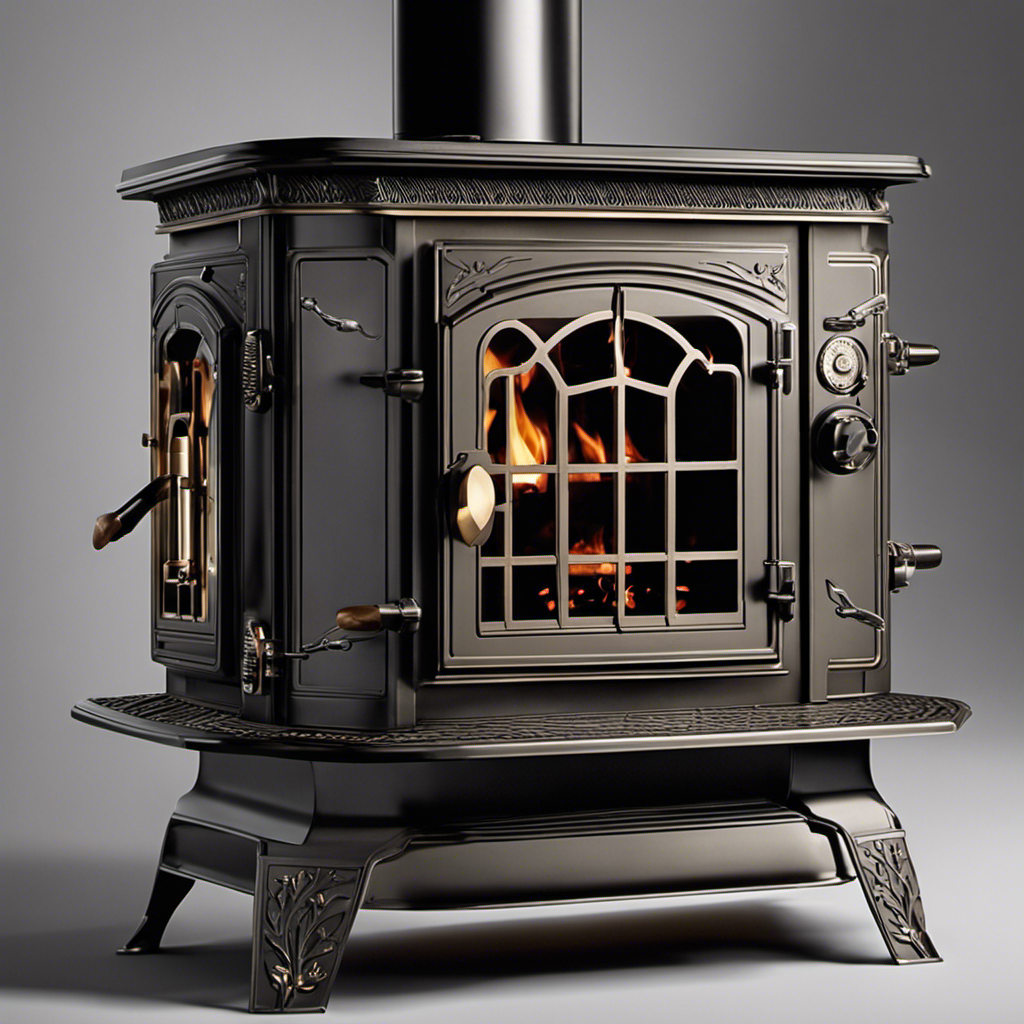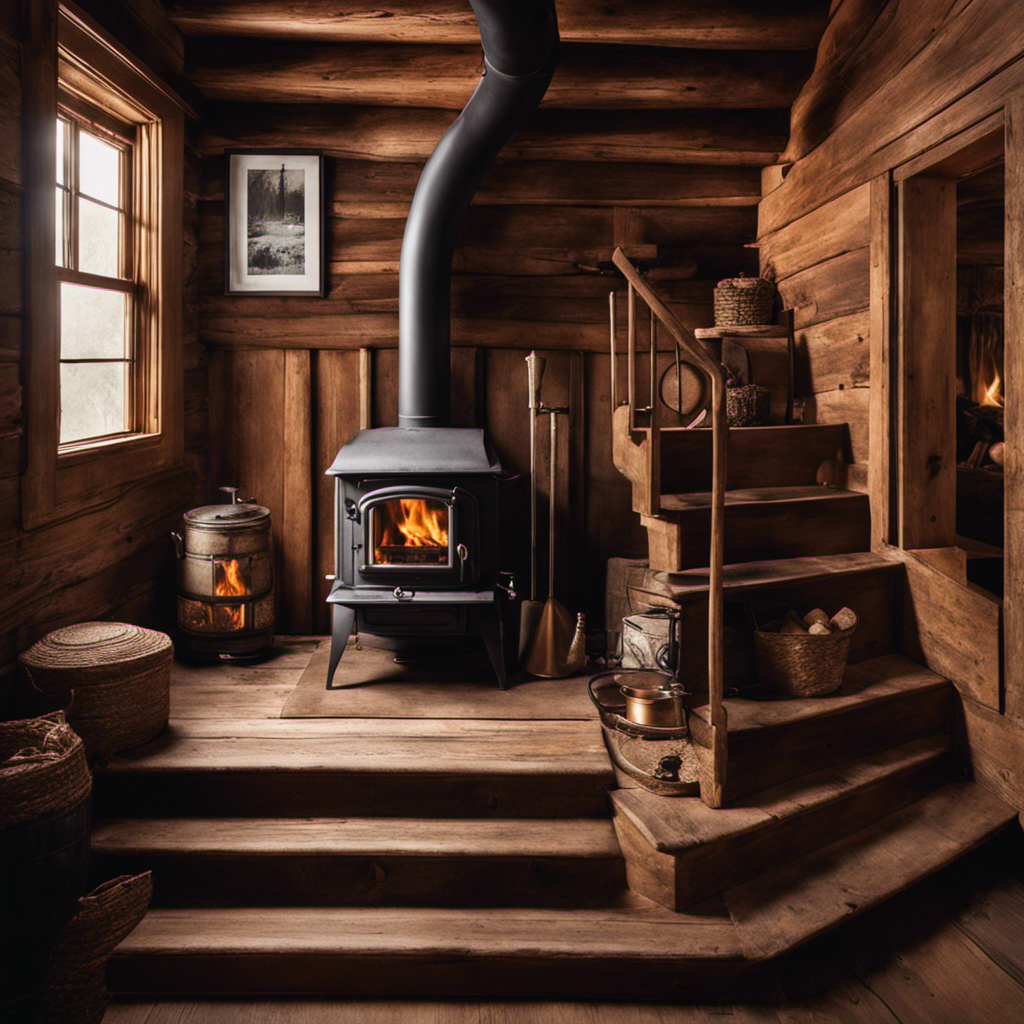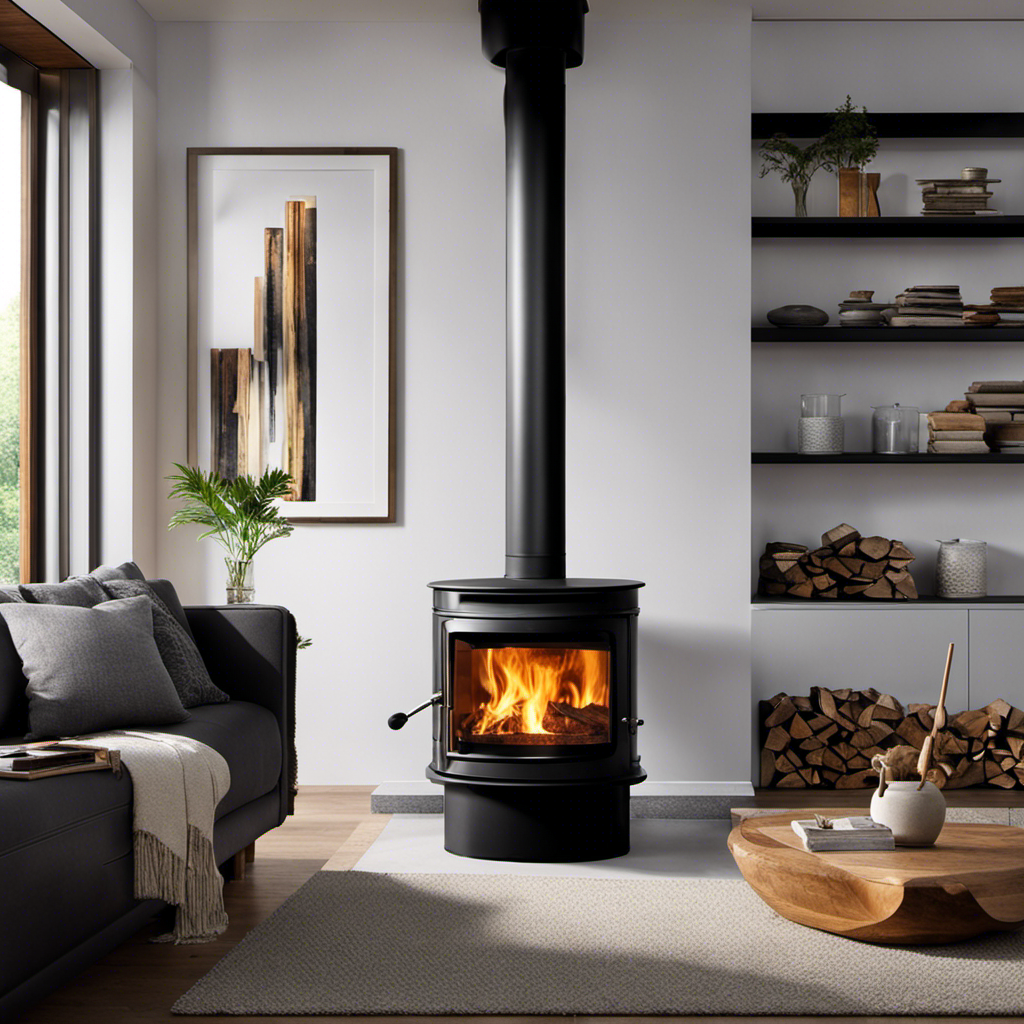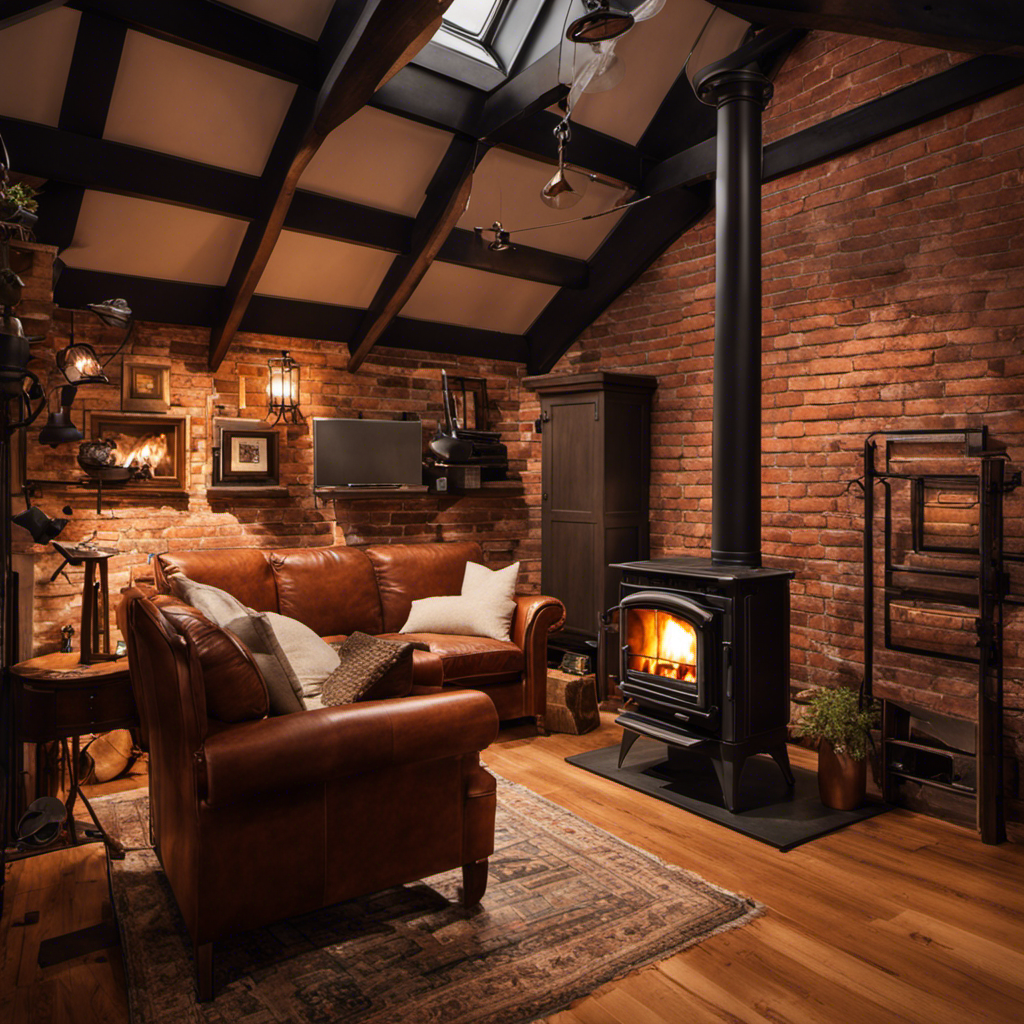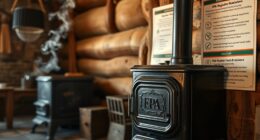As someone who is passionate about wood-burning stoves, I have frequently pondered the role of the baffle.
It’s like the conductor of a symphony, orchestrating the perfect balance of combustion efficiency and heat output.
With its clever design, the baffle controls the airflow, reducing emissions and preventing creosote buildup.
It’s a silent hero, working behind the scenes to optimize the performance of our beloved wood stoves.
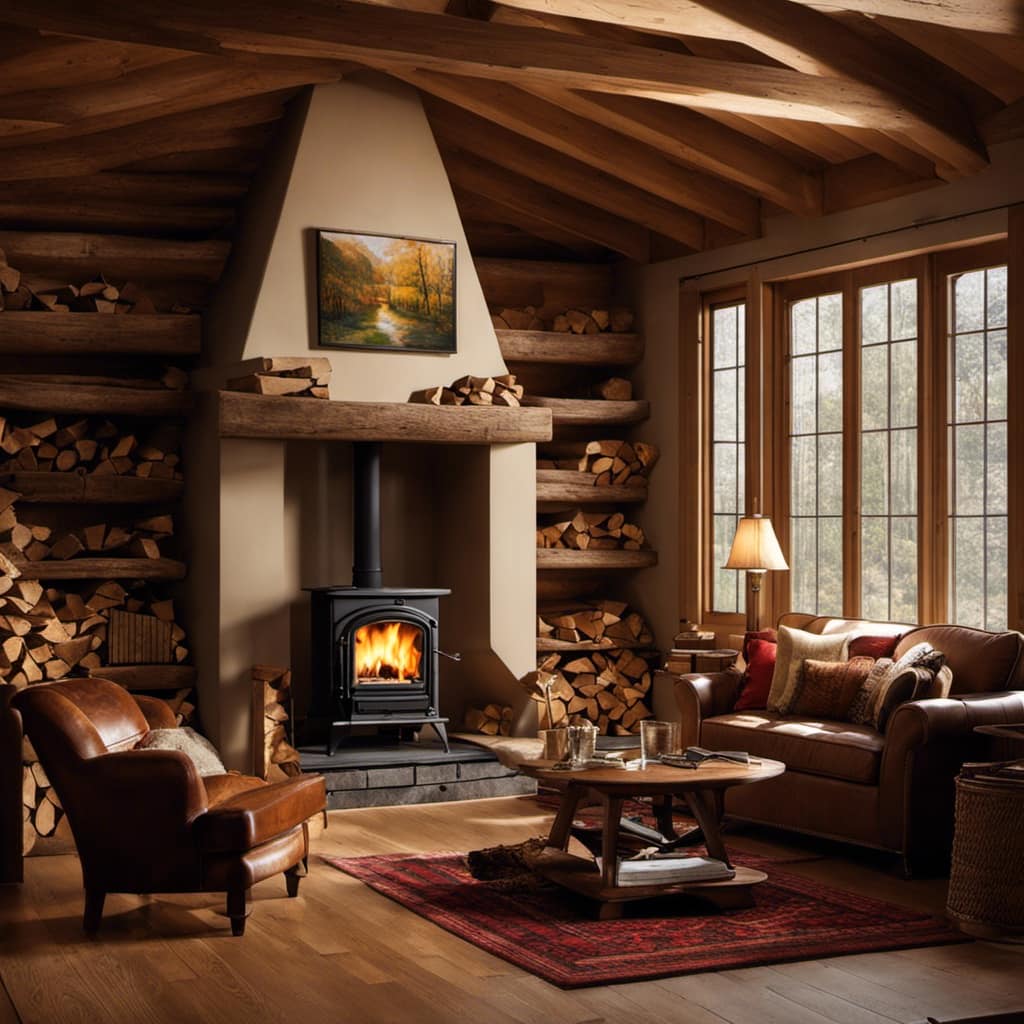
Join me as we delve into the fascinating world of the baffle and unlock its secrets.
Key Takeaways
- The baffle improves combustion efficiency and promotes complete combustion in wood stoves.
- It enhances heat output by maximizing heat transfer and controlling airflow.
- The baffle contributes to reducing emissions and improving air quality.
- It plays a crucial role in preventing creosote buildup in the chimney and improving energy efficiency.
The Role of the Baffle in Combustion Efficiency
I find it fascinating how the baffle in a wood stove greatly improves combustion efficiency.
The design of the baffle plays a crucial role in ensuring optimal combustion of wood and other fuels.
A well-designed baffle creates a controlled airflow pattern within the stove, promoting complete combustion and reducing the release of harmful emissions.
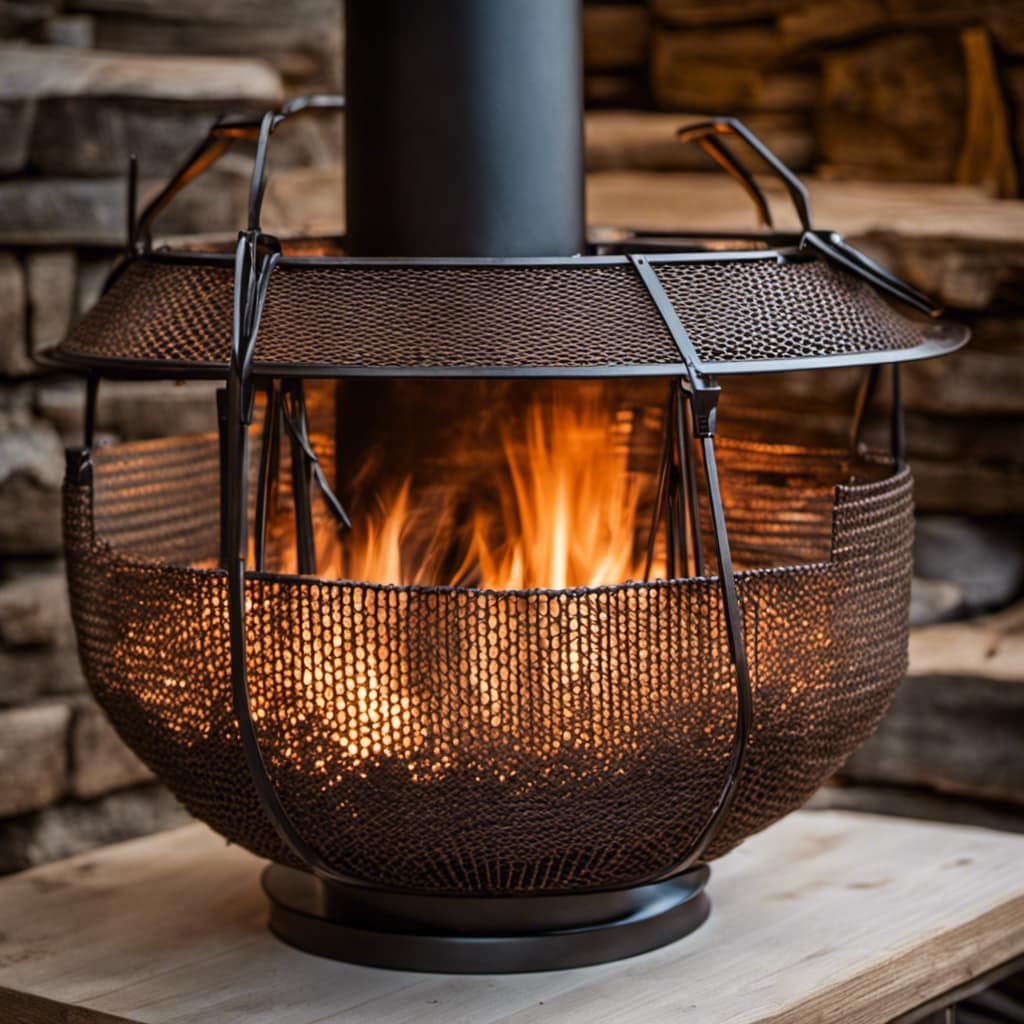
The baffle’s insulation properties also contribute to its effectiveness.
By insulating the combustion chamber, the baffle helps to maintain higher temperatures, allowing for more efficient burning of fuel.
This insulation prevents heat from escaping through the flue, ensuring that heat is directed into the room instead.
Overall, the baffle’s design and insulation properties work together to maximize combustion efficiency and enhance the performance of wood stoves.
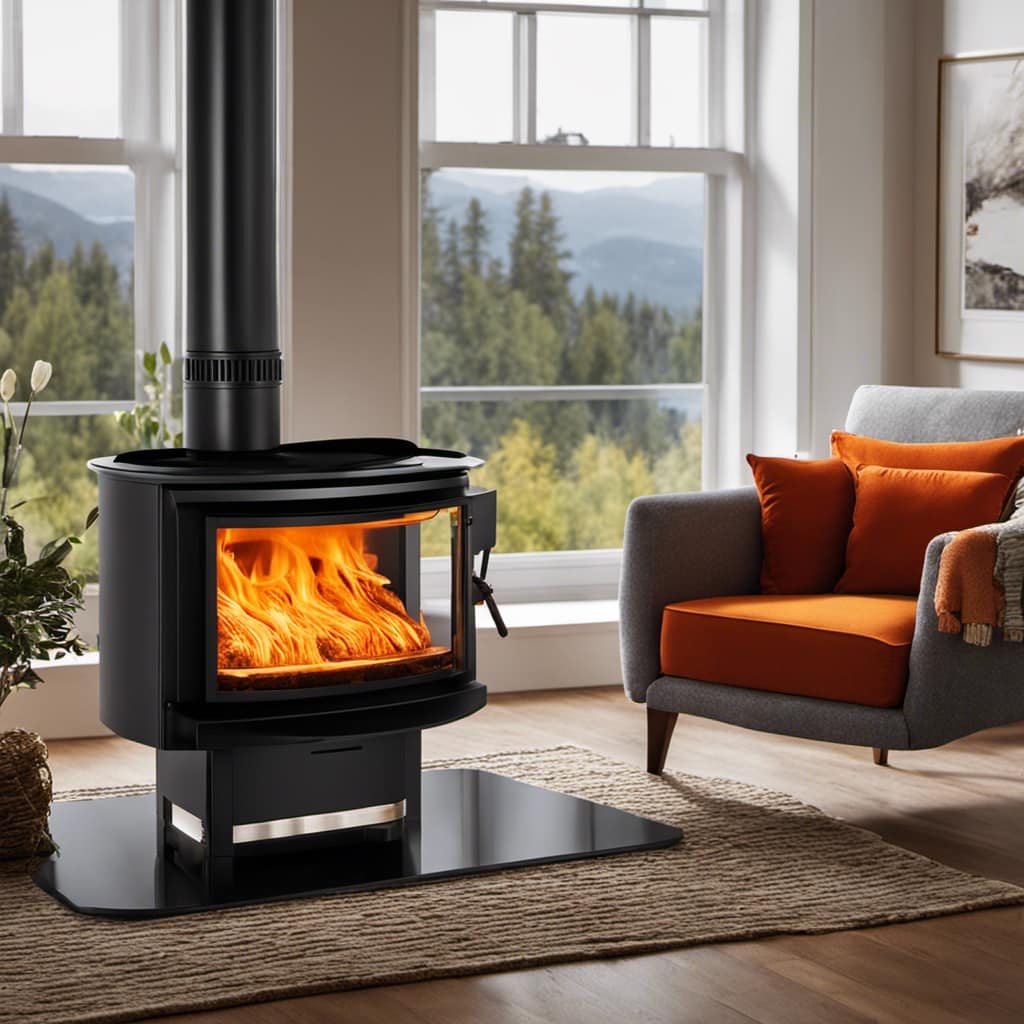
How the Baffle Enhances Heat Output in a Wood Stove
The baffle in my wood stove helps to increase the heat output by maximizing efficiency and increasing heat production. Here’s how it works:
-
The baffle directs the flow of combustion gases, allowing for longer contact with the stove’s surface. This increases the transfer of heat from the gases to the stove, maximizing efficiency.
-
The baffle also creates a longer path for the gases to travel, increasing the time they spend in the stove. This allows for more complete combustion, resulting in higher heat production.
-
By controlling the airflow within the stove, the baffle ensures that the gases stay in the combustion chamber for longer, preventing them from escaping too quickly and wasting heat.
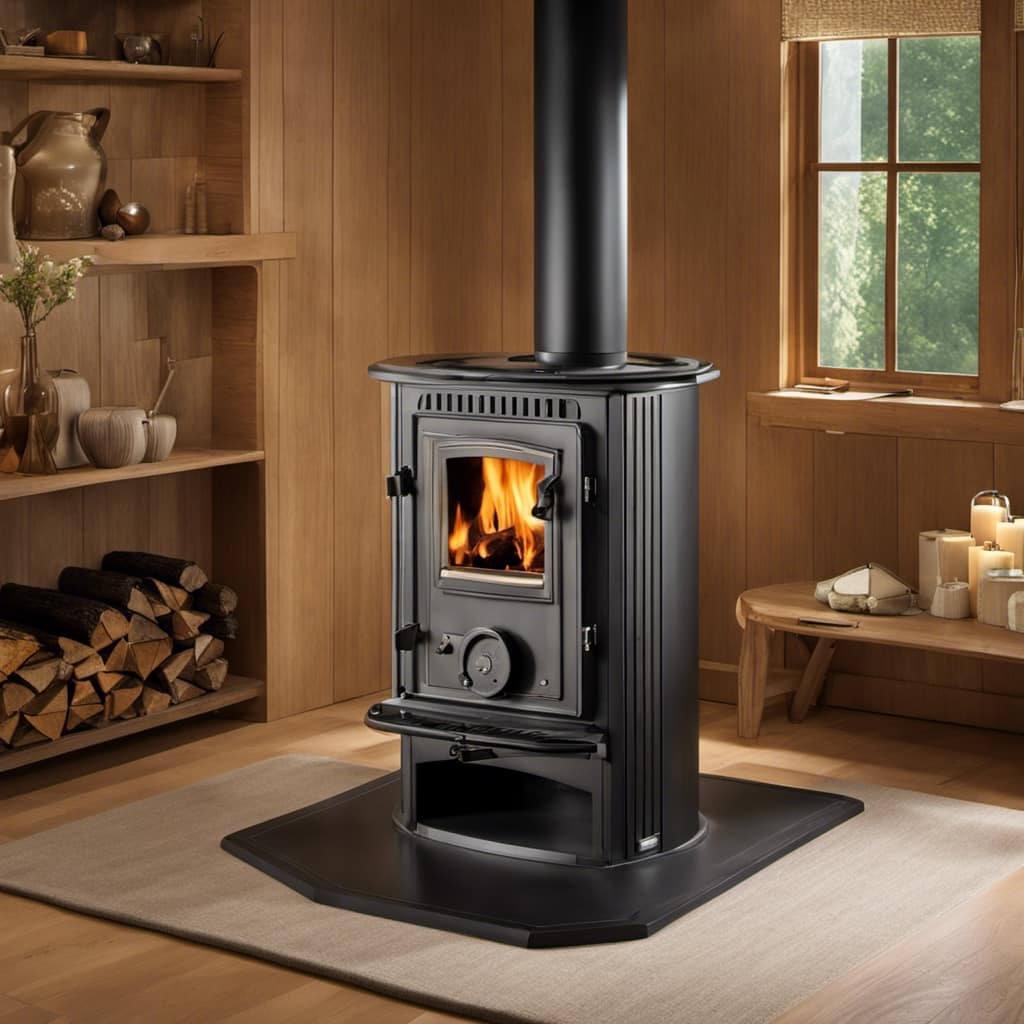
-
The baffle is often made of a heat-resistant material that helps to retain and radiate heat into the room, further enhancing the heat output.
Understanding the Baffle’s Impact on Airflow Control
Understanding how the baffle impacts airflow control is crucial for optimizing heat distribution in my home.
The design of the baffle plays a significant role in regulating the flow of air within the wood stove. By strategically positioning the baffle, I can effectively control the amount of air entering the combustion chamber, thus influencing the intensity of the fire and the heat generated.
The baffle acts as a barrier, directing the air towards the firebox, promoting efficient combustion. It also helps to prevent excessive heat loss by forcing the hot gases to follow a longer path, allowing more time for heat transfer to occur.
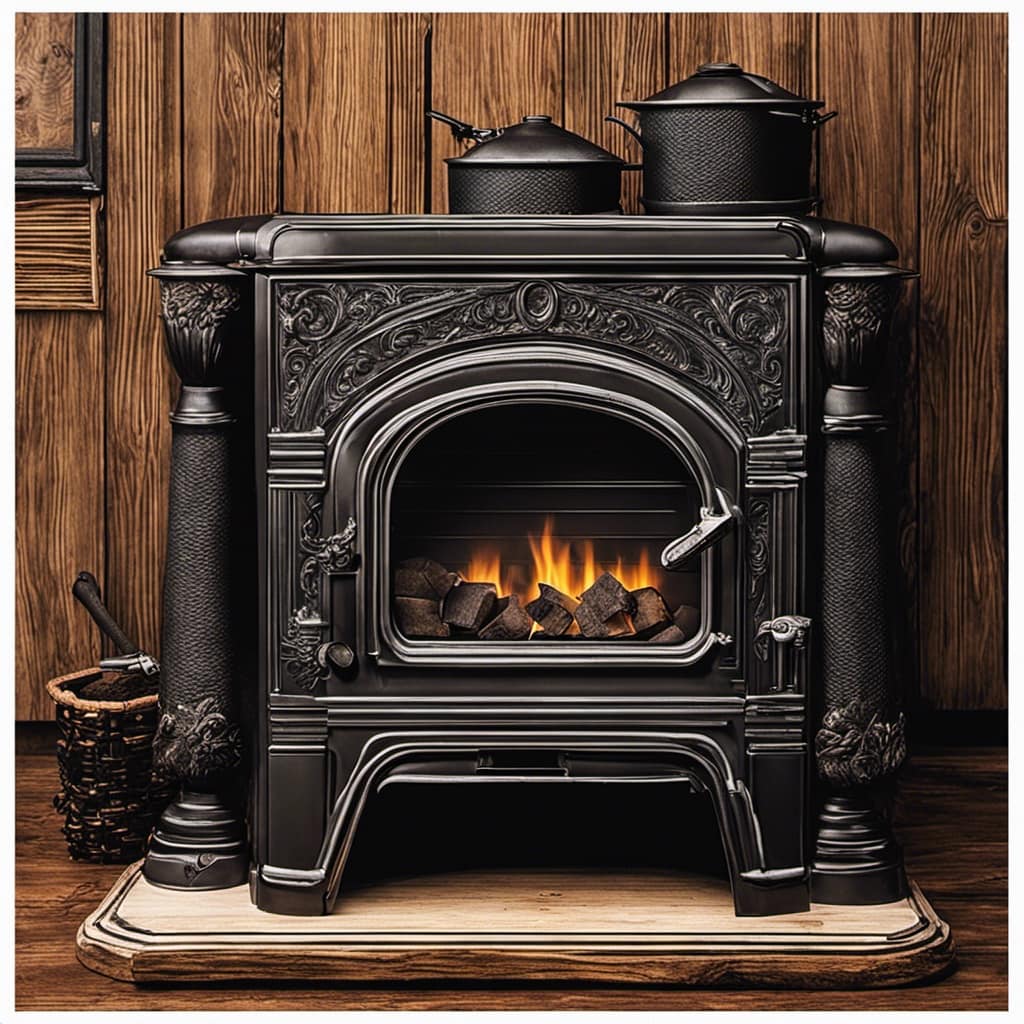
The Relationship Between the Baffle and Emissions Reduction
Reducing emissions is an important aspect of optimizing the efficiency of my home heating system. One key component that plays a crucial role in emission reduction is the baffle in my wood stove.
Here are some key points to consider regarding the baffle’s effect on air quality and its contribution to energy efficiency:
-
The baffle’s design helps control the flow of air within the stove, ensuring a more complete combustion process. This results in reduced emissions, including harmful gases and particles that can affect air quality.
-
By directing the hot gases and smoke towards the stove’s flue, the baffle maximizes heat transfer and minimizes heat loss. This improves the stove’s energy efficiency and reduces fuel consumption.
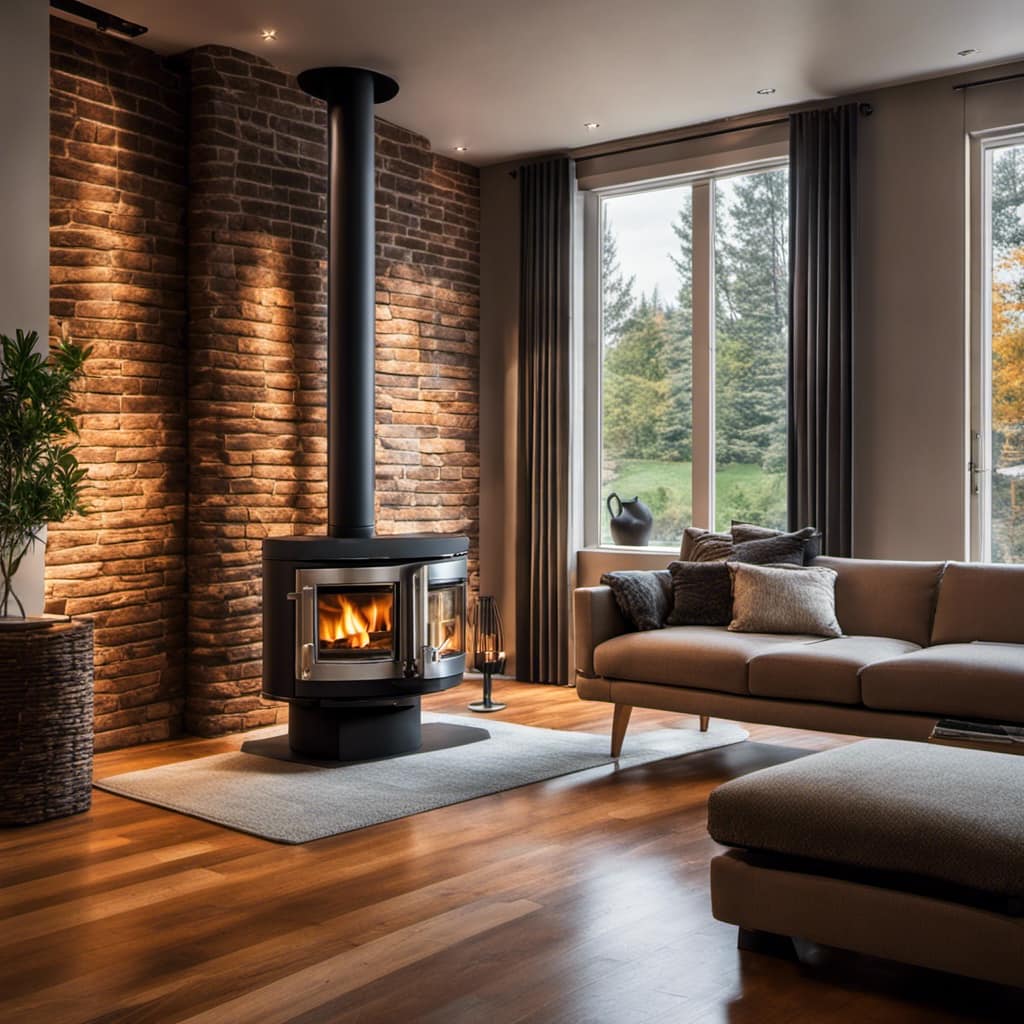
Understanding the baffle’s impact on air quality and energy efficiency is crucial for optimizing the performance of my wood stove. However, it’s also important to explore the baffle’s influence on another critical factor: creosote buildup.
Exploring the Baffle’s Influence on Creosote Buildup
I’ve noticed that the baffle in my wood stove has a significant impact on the amount of creosote buildup. Creosote is a flammable substance that can accumulate in the chimney and increase the risk of chimney fires.
Fortunately, the design of the baffle plays a crucial role in preventing creosote buildup. The baffle is a plate or barrier inside the wood stove that directs the flow of gases and smoke. By creating a longer and more turbulent path for the gases, the baffle increases the amount of time they spend in contact with the stove’s hot surfaces. This promotes more complete combustion and reduces the formation of creosote.
Additionally, a well-designed baffle can help improve the efficiency of the wood stove by ensuring that more heat is transferred to the living space rather than being lost up the chimney. Therefore, it’s essential to choose a wood stove with an effective baffle design to minimize creosote buildup and maximize energy efficiency.
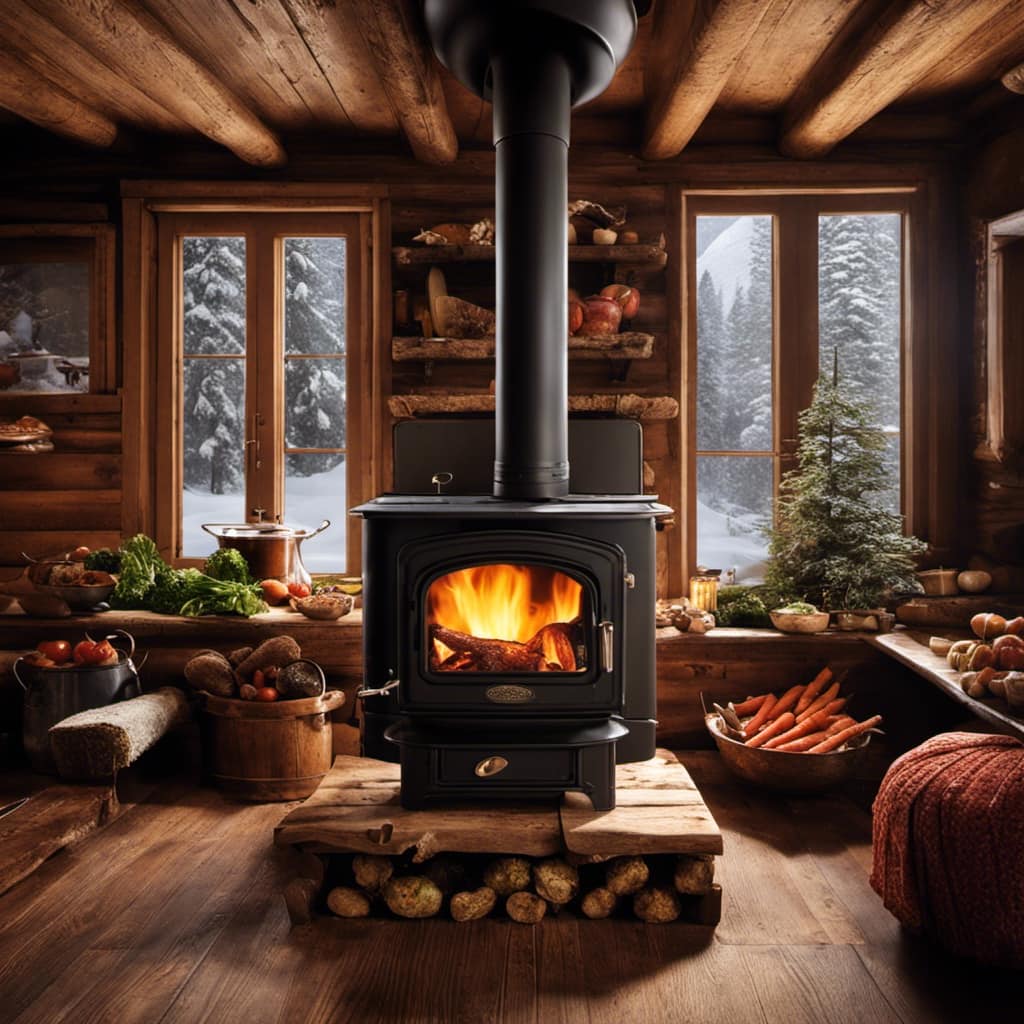
Frequently Asked Questions
How Often Should the Baffle in a Wood Stove Be Cleaned or Replaced?
I inspect the baffle in my wood stove for damage regularly. Depending on usage, I clean or replace it every 1-2 years. This ensures proper airflow and combustion efficiency, preventing any potential issues.
Can the Baffle Be Adjusted to Control the Temperature in the Wood Stove?
Can the baffle be adjusted to control the temperature in the wood stove? Adjusting the baffle position can indeed impact the heating efficiency. Properly positioning the baffle allows for better regulation of heat distribution, ensuring optimal comfort and performance.
What Materials Are Commonly Used to Make Baffles in Wood Stoves?
Baffle materials in wood stoves are commonly made of cast iron or steel. They serve the purpose of directing the flow of hot gases, increasing heat transfer efficiency, and reducing smoke emissions.
Are There Any Safety Considerations When Using a Wood Stove With a Baffle?
When using a wood stove with a baffle, it is crucial to consider safety. Proper installation and maintenance of the baffle are essential. Additionally, ensuring proper ventilation is necessary to prevent carbon monoxide buildup.
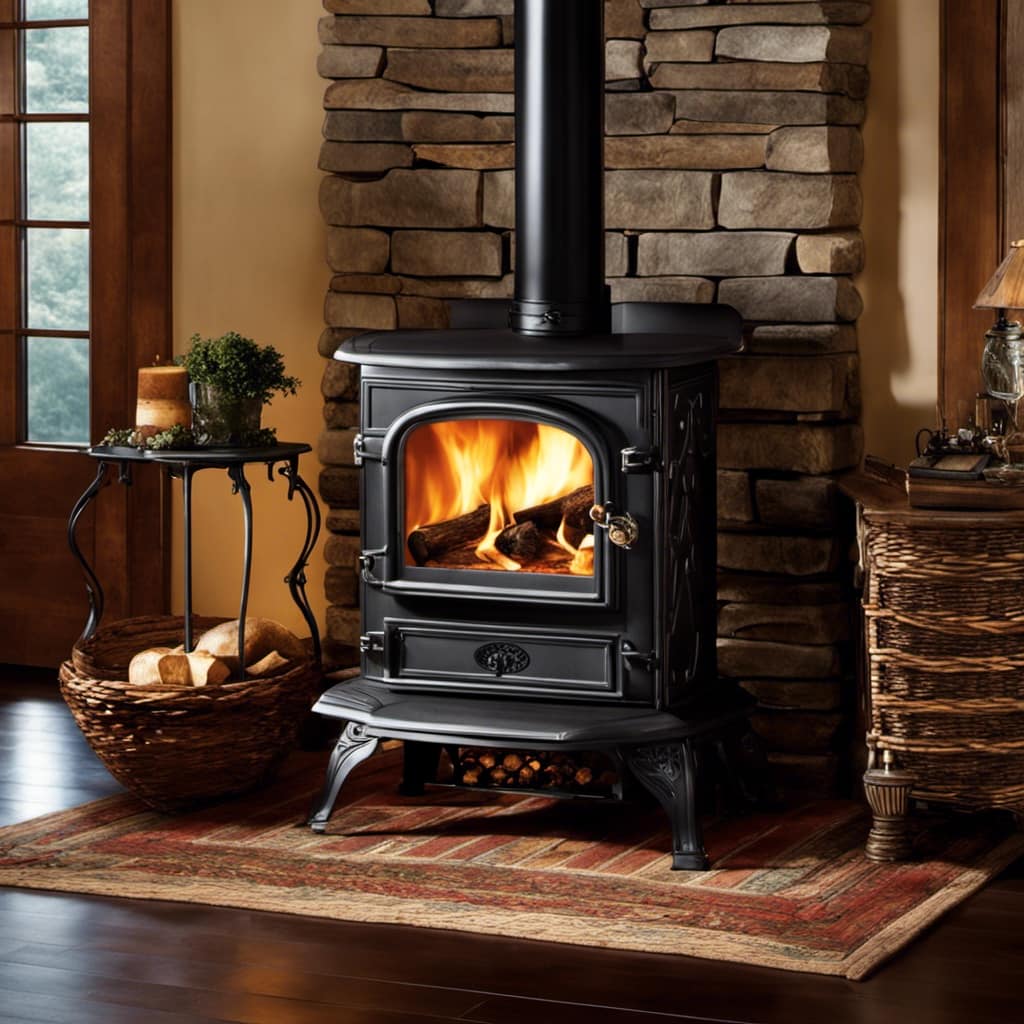
Can a Wood Stove Function Properly Without a Baffle?
A wood stove without a baffle may not function properly as the baffle plays a crucial role in improving wood stove efficiency. Regular baffle maintenance is necessary for optimal performance and preventing potential safety issues.
Conclusion
In conclusion, the baffle in a wood stove acts as a powerful conductor, directing heat towards the room.
Like a conductor leading an orchestra, it optimizes combustion efficiency, enhances heat output, and controls airflow, resulting in reduced emissions and minimized creosote buildup.
By understanding the importance of this seemingly small component, we can appreciate how it plays a vital role in maximizing the performance of our wood stoves.
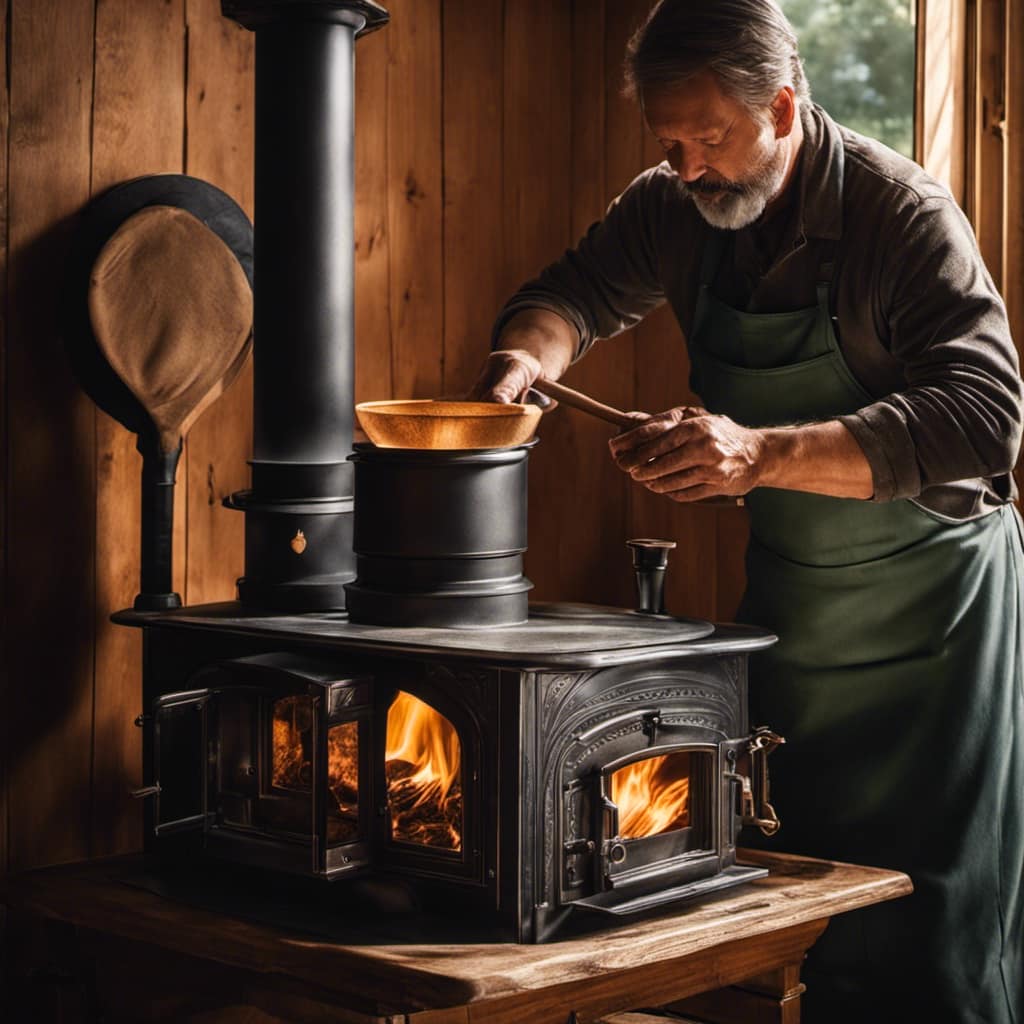
Growing up surrounded by the vast beauty of nature, Sierra was always drawn to the call of the wild. While others sought the comfort of the familiar, she ventured out, embracing the unpredictable and finding stories in the heartbeat of nature.
At the epicenter of every remarkable venture lies a dynamic team—a fusion of diverse talents, visions, and passions. The essence of Best Small Wood Stoves is crafted and refined by such a trio: Sierra, Logan, and Terra. Their collective expertise has transformed the platform into a leading authority on small wood stoves, radiating warmth and knowledge in equal measure.




